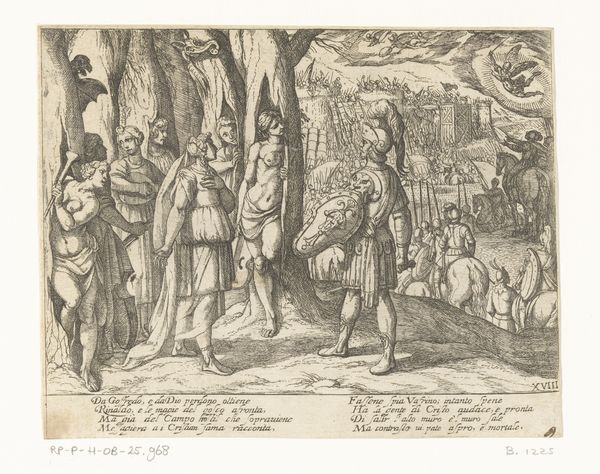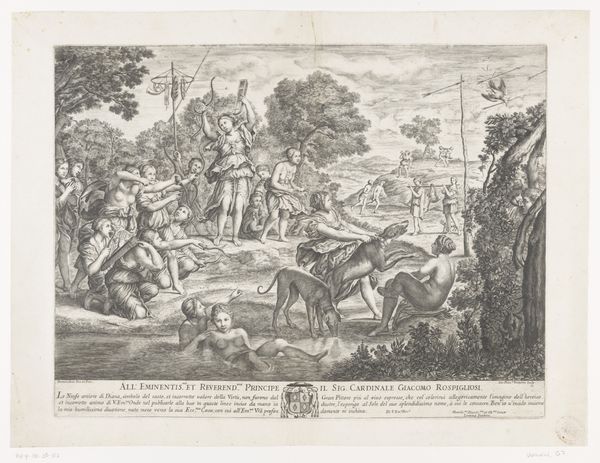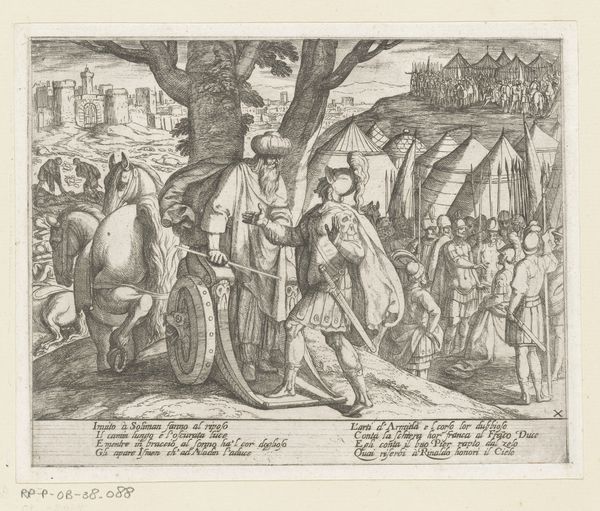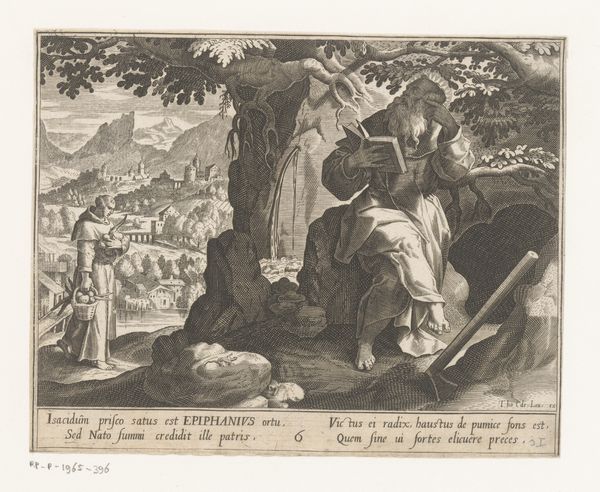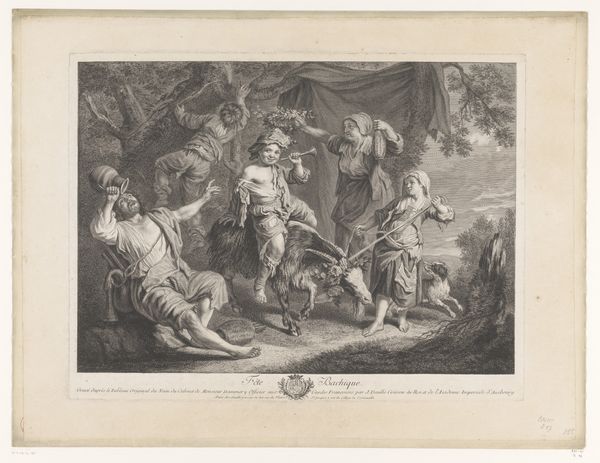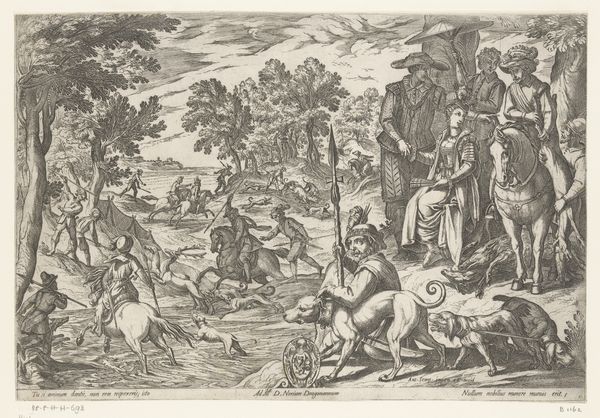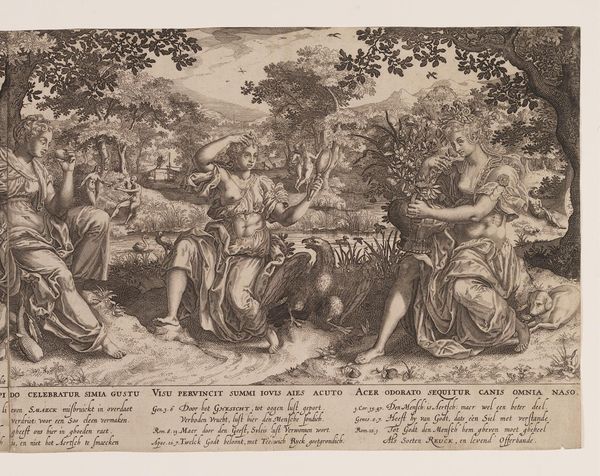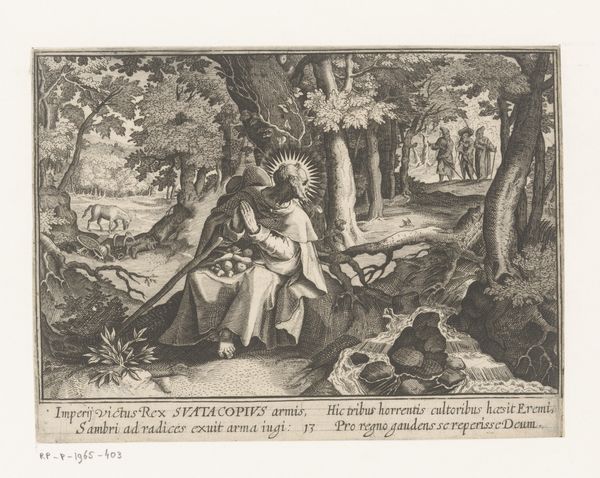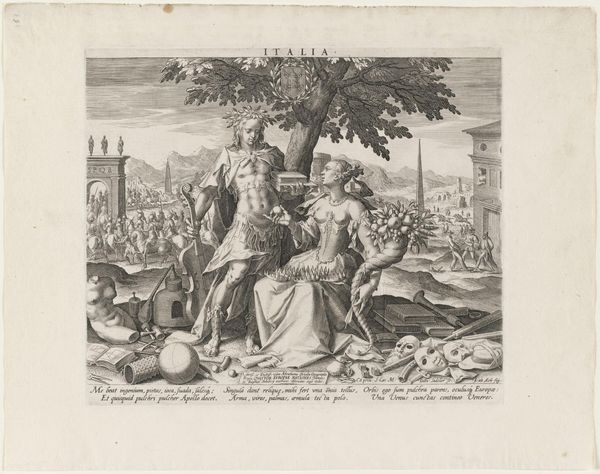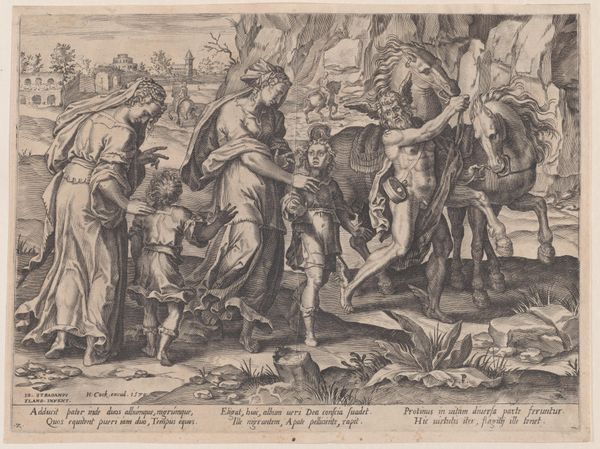
print, engraving
#
baroque
# print
#
old engraving style
#
landscape
#
forest
#
horse
#
genre-painting
#
history-painting
#
engraving
Dimensions: height 140 mm, width 188 mm
Copyright: Rijks Museum: Open Domain
Editor: This engraving, "Heilige Antiochus als kluizenaar" by Thomas de Leu, is from after 1598 and depicts Saint Antiochus on horseback traveling with an attendant through a forest. It's amazing the level of detail you can get with just lines! The text at the bottom must have something to do with the story. What catches your eye when you look at this print? Curator: Well, beyond the exquisite line work typical of engravings from this period, what immediately grabs my attention is how this image reflects the socio-political role of religious imagery in the late 16th century. Here, we have a saint, traditionally associated with healing and protection, being depicted in what looks like a genre scene or even a history painting, as opposed to traditional portraiture. It seems designed for wider distribution. What do you make of this shift? Editor: I guess it makes it more relatable? Like, putting the saint in a recognizable landscape does bring him down to Earth, makes him feel closer to the people who would see the image. Curator: Exactly. This brings into play the context of the Counter-Reformation, right? Religious art became a key tool in reinforcing Catholic doctrine, engaging emotions, and combatting Protestant criticisms. This scene may function as a way to bring religious figures to life, reaffirming faith through a digestible and appealing visual narrative. It is like the early use of PR tactics. Editor: PR tactics! That makes so much sense. Is that why it focuses on such a humble moment instead of a grand miracle? Curator: Precisely. It speaks to a more intimate and human portrayal, making Antiochus’s journey and eventual sainthood feel more achievable and relatable for everyday people, while visually emphasizing traditional hierarchical societal relations via the interplay of the three figures depicted. Editor: Wow, that changes how I see it. I was focused on the technique, but the print is really a cultural artifact, reinforcing the power structures. Curator: And remember, that visual language, even seemingly simple compositions, reflects larger socio-political agendas. That's where art history gets really interesting, for me anyway!
Comments
No comments
Be the first to comment and join the conversation on the ultimate creative platform.
